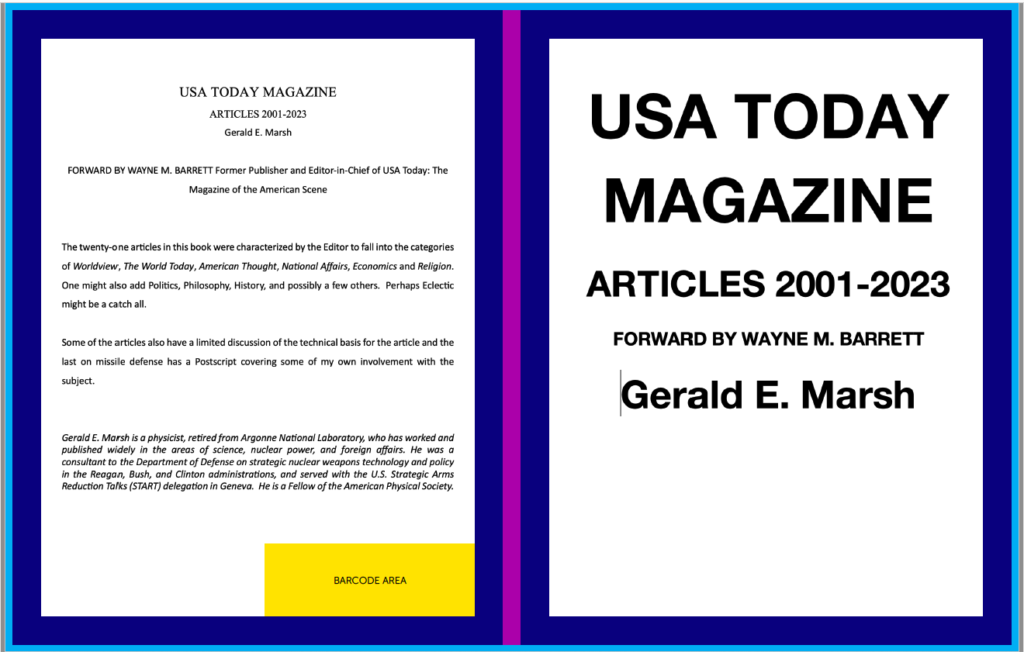This book gathers together the articles I published in USA Today Magazine. They cover a large variety of topics and the book contains a commentary, sometimes giving history and technical details that could not be included at the time.

Variation in total solar irradiance is thought to have little effect on the Earth’s surface temperature because of the thermal time constant—the characteristic response time of the Earth’s global surface temperature to changes in forcing. This time constant is large enough to smooth annual variations but not necessarily variations having a longer period such as those due to solar inertial motion; the magnitude of these surface temperature variations is estimated.
IRRADIANCE VARIATIONS DUE TO ORBITAL AND SOLAR INERTIAL MOTION
This talk was given some time ago but remains relevant.
The climate modeling community is confident that its models are adequate to be a basis for public policy decisions, despite the illegitimacy of ensemble averaging and the deficiencies with regard to the second law of thermodynamics.
USA TODAY MAGAZINE climate-shenanigans
The following was submitted to Science magazine in response to Jeffrey Kiel’s 14 January 2011 Persective “Lessons from Earth’s Past”:
This letter was also posted on Climate Audit
Slides from a talk given at the Faculty Club of the University of California, Berkeley on 29 May 2010 for A Celebration of Hugh DeWitt’s Contributions on His Eightieth Birthday .
Climate Change: The Sun’s Role-DeWitt Symposium 29 May 2010-Viewgraphs
A talk given on 18 May 2010 at the 4th International Conference on Climate Change.
The existing understanding of interglacial periods is that they are initiated by Milankovitch cycles enhanced by rising atmospheric carbon dioxide concentrations. During interglacials, global temperature is also believed to be primarily controlled by carbon dioxide concentrations, modulated by internal processes such as the Pacific Decadal Oscillation and the North Atlantic Oscillation. Recent Work challenges the fundamental bases of these conceptions.
Journal of Climatology, Volume 2014, Article ID 345482
http://dx.doi.org/10.1155/2014/345482
The real tipping point for civilization is the beginning of another Ice Age—not a world a few degrees warmer.
USA Today Magazine (November 2009)
“The real tipping point for civilization is the beginning of another Ice Age–not a world a few degrees warmer.”